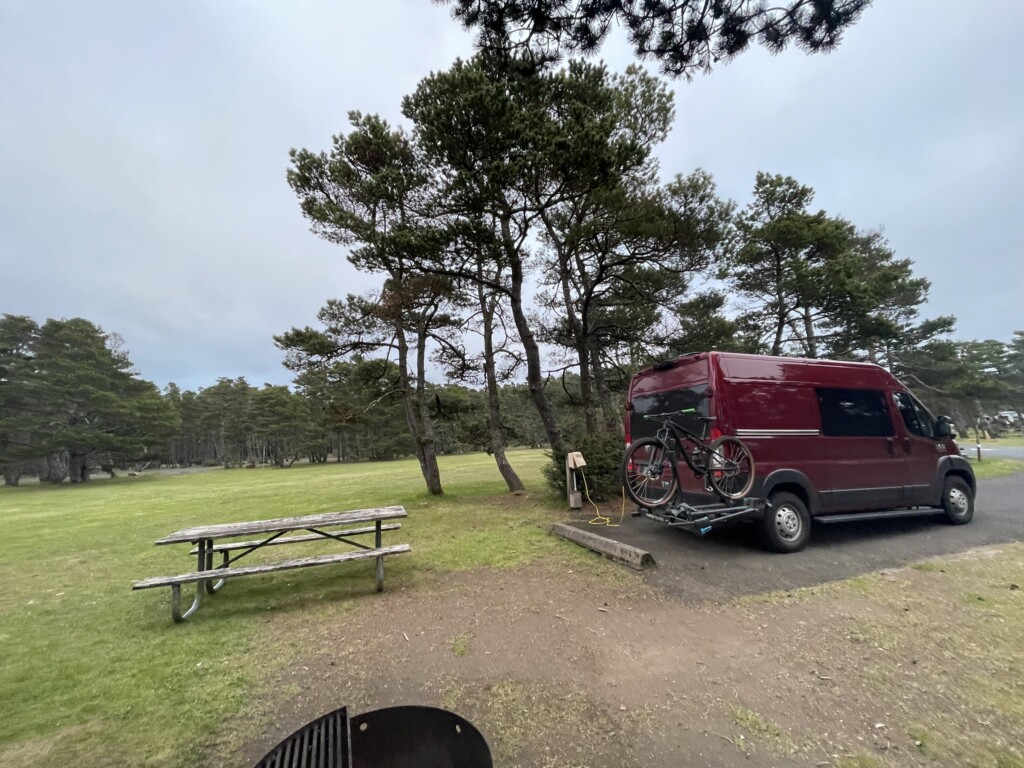Walter
RAM ProMaster
136″ WHEELBASE, HIGH ROOF
Howdy everyone! Pete and Mia Rhodes here, 2025 Wayfarer Vanbassadors and proud owners of a 2020 “Walter” conversion (Ram Promaster 136” wheelbase), affectionately known as ‘Clifford the Big Red Van.’ We picked up our van in November of 2020 and use it primarily for weekends camping, a week-long trip here and there, and for day trips to hiking trailheads and for biking (road, gravel, mountain, you name it). We affectionately call it our mobile HQ.
During our multi-year research, we looked at Class C RVs, Class B vans, and various tow trailers. When we originally purchased our van, we bought the basic kit that Wayfarer previously offered, which included insulation, wall panels, flooring, bed, kitchen and a boot box, plus a MaxxAir vent fan and driver side window above the kitchen galley. What attracted us to Wayfarer Vans was the simplicity of the build. In all their conversions, you can literally remove everything with a 9/16” wrench and a screwdriver if you so desire.
I’m a tinkerer by nature and a frugal Yankee to boot. I knew over time we would “make the van our own,” as I like to say. I thought it’d be fun to break down the additions and modifications we’ve made across several categories. So, here we go!
STORAGE:
The very first modification we made was anchoring some ‘back of the closet door’ shoe holders to the rear doors with self-tapping metal screws. In our van, these hold various shoes, a first aid kit, a 30 to 15 amp converter for shore power, and much more.
Mia also came up with the fantastic idea for various baskets above the bed and kitchen which gives us designated spots for things like charging cords, soap, hand towels, the all important French press, etc.
Lastly, we use our boot box for holding our stove, 5lb fuel tank and adapter hose, a couple of axes, a small air compressor, and small mat for placing on the ground at campsites.
Over the past four years we have also added wheelie boxes for both sides of the van. I cannot recommend having at least one enough! Not getting one with our build was a mistake.
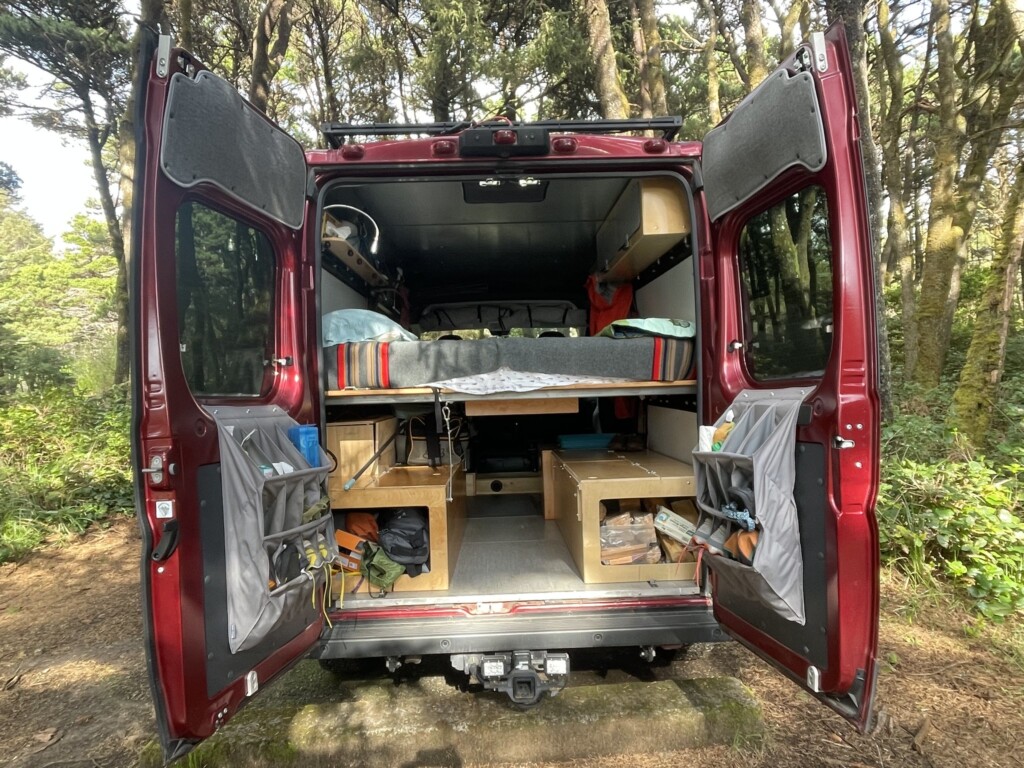
POWER:
We started off with a Jackery 1000 portable power bank for the first year of travel. In preparation for a month-long trip from Oregon to New Hampshire, I decided to install our own 12v house battery system. This is where the ease of removing wall panels really comes into play. I had to run cables from the van battery and solar panels to the charge controller, and then other wires to things like lights on each side of the bed, an LED bar on the outside of the van above the sliding door, a 12 volt “cigarette lighter” to run our fridge, a 1000 watt power inverter, and I installed my own puck lights in the ceiling (this was before they came standard with Wayfarer’s conversion). We also installed the “shore power” (also now a Wayfarer add-on accessory) if we have a campsite with electrical hookups for things like a portable air conditioner. This was by far the biggest project to date.

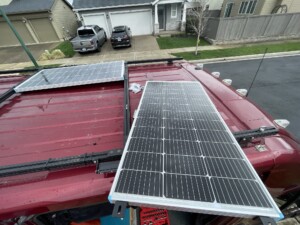
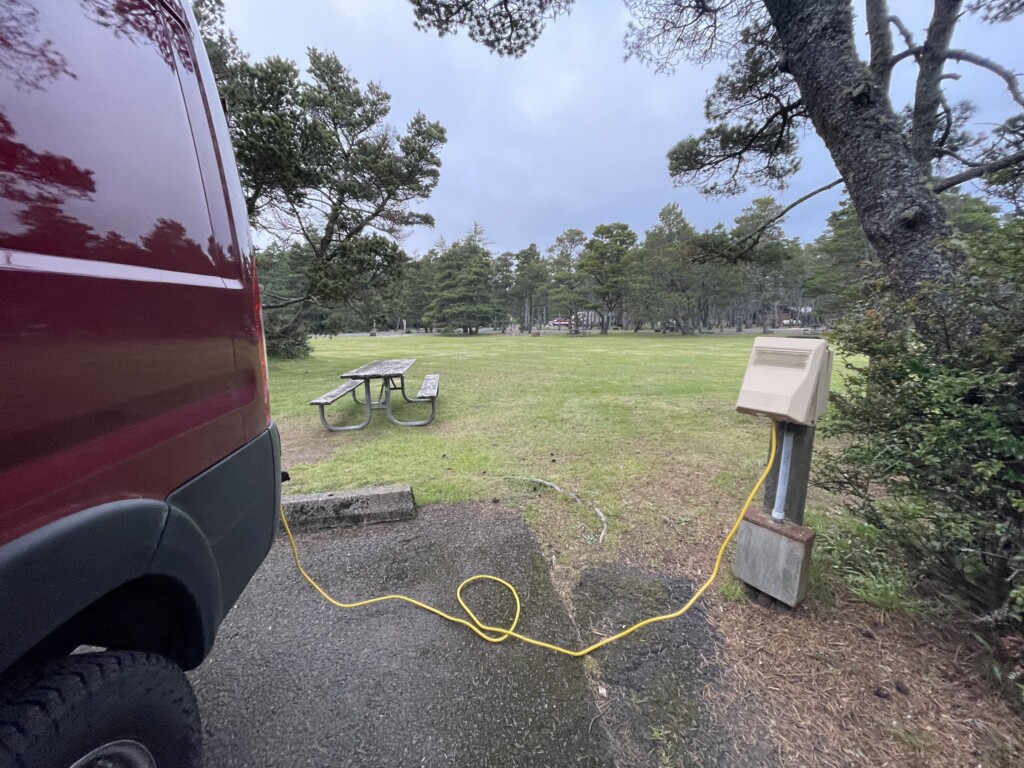
HEAT:
In late 2024 I paid a professional to install an Espar gas heater that taps directly into our gas tank. This allows year-round camping in all weather conditions and has been a game changer! Wayfarer’s Propex heating system wasn’t an option at the time of our conversion, but appears quite comparable to the Espar system.
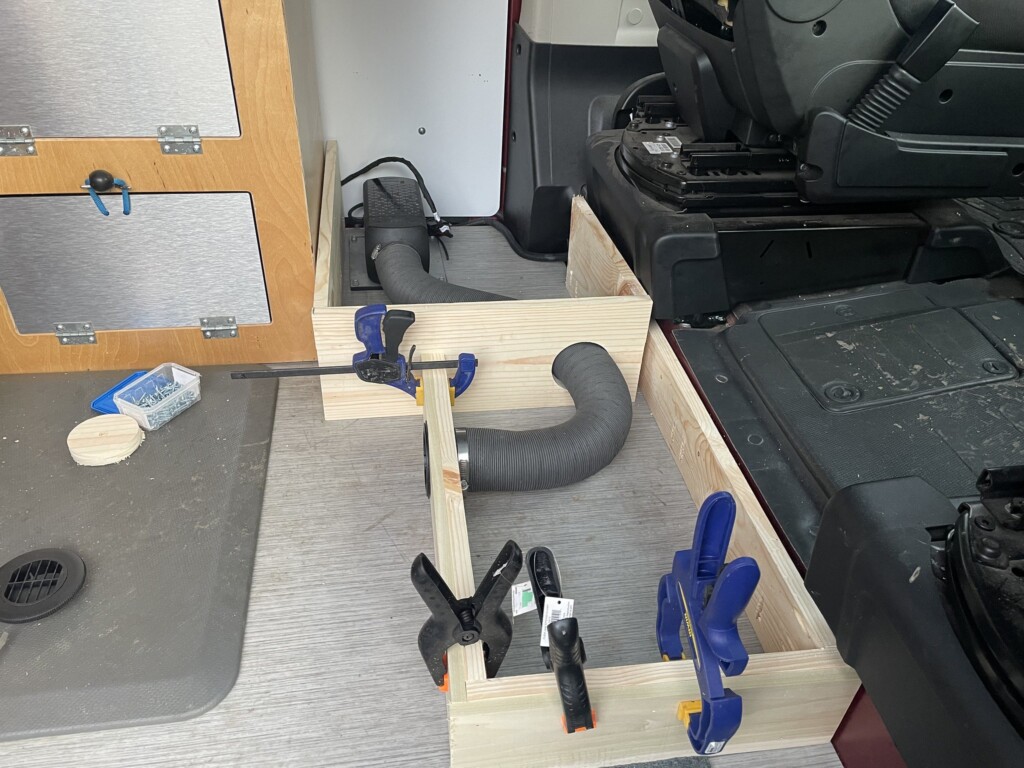
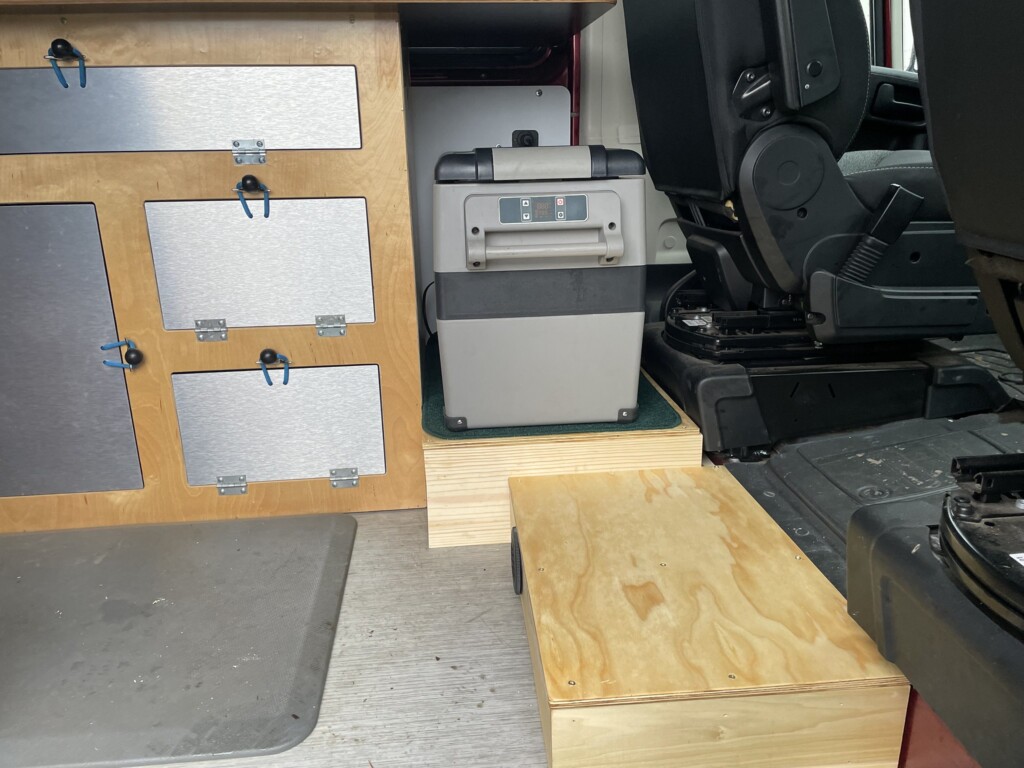
Miscellaneous:
We have installed additional Havelock wool insulation in the nooks and crannies, behind the slider and rear door panels too. This has upped our R-value and helped with some extra sound insulation. Kilmat sound deadening sheets were installed on the walls and wheel wells. Once again, this is where removing the wall panels is super simple. We installed our own Bug Wall on the slider prior to Wayfarer Vans offering this as an upgrade.
On the outside we have a Rocky Mounts swing away bike rack on the rear hitch. This allows us to open the rear doors fully while traveling with the all-important bicycles. Running boards were a nice addition for the two of us as I am a towering 5’4” and Mia is 5’5”. No more giant steps out/in on the sliding door.
Conclusion:
We cannot stress enough how easy it is to “make it your own”. These are all projects that have taken place over the past four years. We had a fully functional camper van that allowed us to travel immediately but also tweak it to how we use it as time went on.
That’s probably the most beautiful thing about the Wayfarer Vans conversions – instead of a cookie cutter template from one of the big RV companies, you can move things around and adjust as you see fit. It really turns it into something that works for you and how you travel.
I hope this offered some insight into the many options available to you should you choose Wayfarer for your van adventures! The standard kits are all you really need but at the same time, don’t be afraid to make changes on your own. It is easier than you think.
-Pete & Mia Rhodes
